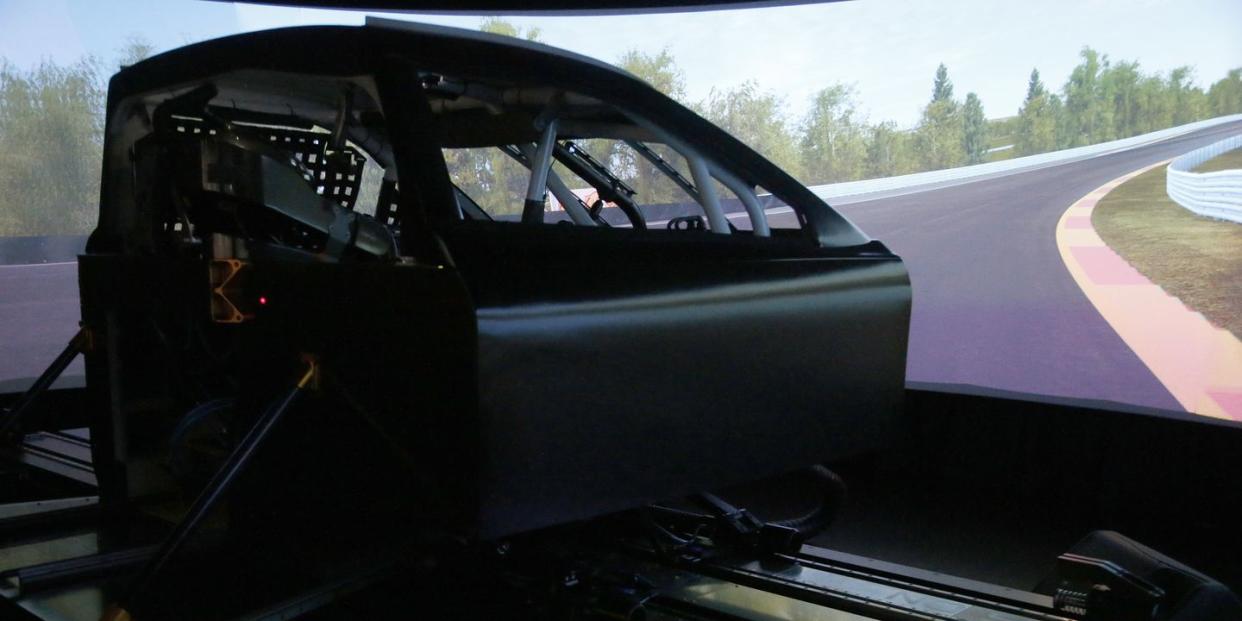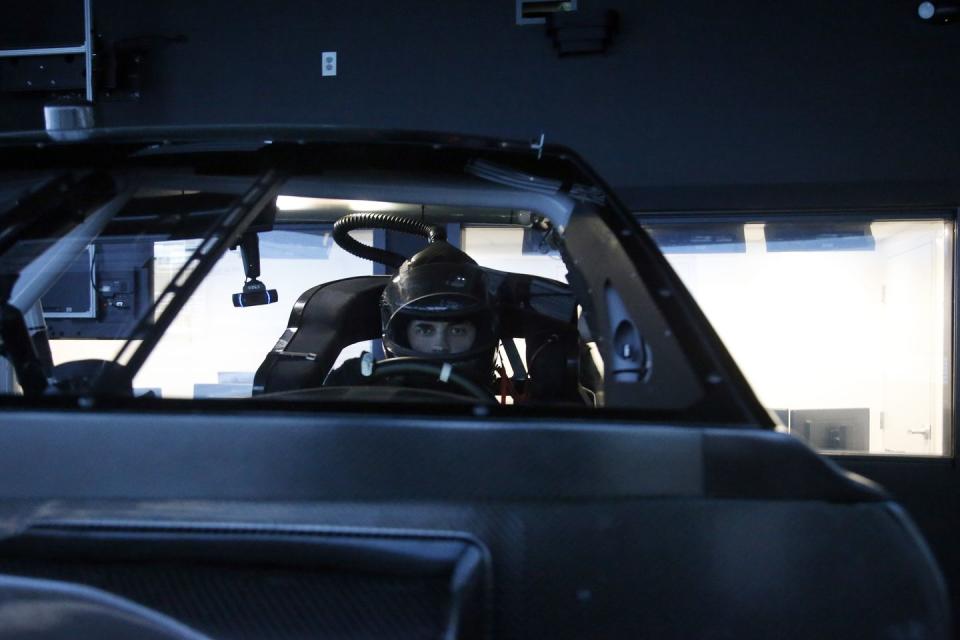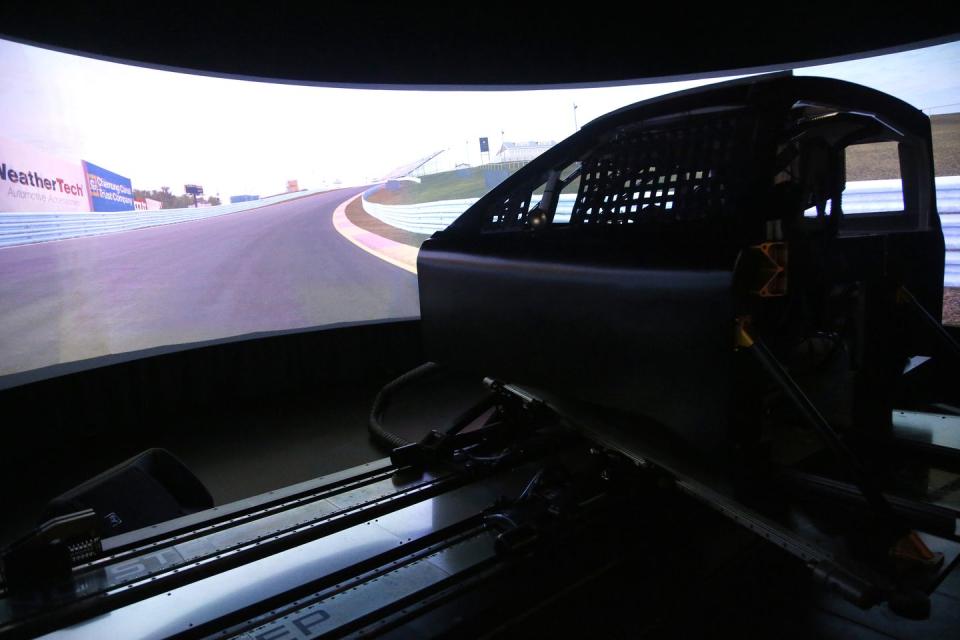How Toyota's Racing Simulators Are Creating Better Street Cars

Cars in NASCAR's Cup series are specialized vehicles that may look like their road going counterparts but are very different underneath. Some may complain about using the stock car name for a car that is based on a tube chassis but the cars are built in this manner for a number of reason from safety to the type of tracks they race on. While there isn’t a Toyota Camry on the road that has a V8 like its NASCAR Cup car version, there are elements of the racing program that are making the road car better.
We spoke with Toyota Racing Development USA executives David Wilson and Tyler Gibbs to find out how simulation and testing tools that they built at the TRD USA facilities for their race cars are now being used to make Toyota road cars better. Their facility in Salisbury, North Carolina has a variety of tools that include an Advanced Vehicle Cornering Simulator (AVCS), a pull-down rig, an eight-post “shaker” rig, as well as a custom race simulator. These tools were acquired or built by the TRD USA team for use by the Toyota teams that they work with in NASCAR as well as the Lexus team that they work with in IMSA but now they are seeing a new use as they are implemented in road car testing.
Although race simulators are now becoming common in NASCAR, TRD was the first to build one at their facility for use by both the drivers and engineers. The race simulator consists of multiple components but the main parts are a front half of a Camry Cup car that is mounted on hydraulic cylinders and computers in the back that do all of the math and calculations for the simulation to try to replicate real world conditions.
The largest benefit of the simulator on the racing side is the ability to test a variety of configurations without having to actually put a car on track. The custom programming and underlying math model built by TRD engineers allow the teams to be able to put a driver in the simulator and input their cars suspension setup into the computer and replicate the experience of being on the race track. This is beneficial as a driver training tool especially for new drivers. The secondary benefit is for the crew chiefs and engineers as they can make changes to a car to see how it will respond to a suspension setup in just a few seconds which is beneficial as practice times are often limited when they are actually at the track.
Movable components of the simulator allow a driver inside to feel how the car will respond on the track as the various hydraulic and electronic components move the Camry rig around based on inputs from the computer system. Crew chiefs and engineers can also play with a variety of suspension adjustments virtually that they can change in seconds versus minutes at the track and get immediate feedback from the driver.
The underlying math model that runs all of this simulation is proprietary to the TRD team and they use a lot of their other tools like sensors on the car to be able to feed it data to make calculations. These sensors allow them to make a virtual map of a race track while they are there that records things like elevation, banking, and even dips in the track so that they can replay it on the simulator.

These sensor are also key in their road car testing and what is allowing them to help with testing of prototypes for Toyota road cars. One example that Wilson and Gibbs discussed is having the ability to drive something like Angeles Crest Highway in California and records the road for their simulator. Once they have the road recorded they can take something like a Camry or Corolla and input its information into the simulator and virtually drive that road.
This type of exercise allows them to test a variety of spring and damper packages on the car virtually without having to actually build them and install them on a car along with the side benefit of being able to test in their own private space without having to build a camouflaged car and truck it or fly it out to California for testing. Testing of these road cars is not only limited to what consumers can buy at the dealership as they are now also helping Toyota test autonomous cars as they can input any type of vehicle to be run against their simulation software which saves on prototyping and testing costs.
Toyota often builds prototype vehicles in Japan and flies them out the United States to be tested on a variety of roads for chassis tuning so this is reducing their time for testing allow for a quicker turnaround in the prototype stage. Winning races was part of what helped to convince the mothership to look at these tools as in example where Lexus LC chief engineer Koji Sato visited the North Carolina facility just a week after Toyota won the NASCAR Cup championship just to see their capabilities and how they were able to get there. Sato is now president of Lexus International so we might see some influence on future Lexus vehicles.
The dynamic vehicle simulator built by the TRD team in Salisbury, North Carolina has even impressed some of the top Toyota engineering leaders in Japan. According to Wilson, these engineering leaders did a world tour of a variety of simulation and testing facilities a couple of years ago and after stopping in Salisbury they qualified their simulator as one of the best in the world. They liked it so much that they requested one to be built for one of their facilities in Japan.

This simulator was not to be built for racing but instead they requested it for their R&D center located at the foot of Mt. Fuji. They ended up building one around a Camry cockpit and it was commissioned at the Mt. Fuji facility last April. That tool is a direct impact of their participation in motorsports, specifically NASCAR, and it is now being used to develop production Camrys. Wilson calls that program "one of their proudest achievements."
According to Wilson, they are just scratching the surface of TRD's capabilities since production car testing still makes up a small amount of their time. Understandable, as the primary goal of the facility is to support racing. But spreading this equipment to other Toyota facilities will make better production road cars. TRD is also partnering with the Toyota Research Institute for autonomous cars. This allows Toyota to collect data without having to get special permits or worry about finding a private place to test.
The rest of the tools, such as the shaker rig and pull-down rig at TRD, can be used in conjunction with the simulator when they want a physical input or output. If they decide to build a physical car that they want to test, they can strap it to one of these rigs and simulate a road to see just what impact it has on a damper or spring. They can also use these rigs to collect data about a variety of components that can be inputted into the sim software to make the underlying math model better. There are a lot of variables when it comes to damper tuning. While some of it is done for comfort and compliance, there is also some promise for enthusiasts that are looking for a sportier ride.
Recently, it's seemed that the transfer of technology from racing to the street has been lacking. But just because you can't see it happening in obvious ways doesn't mean that manufacturers aren't finding ways to make that investment pay off.
You Might Also Like

